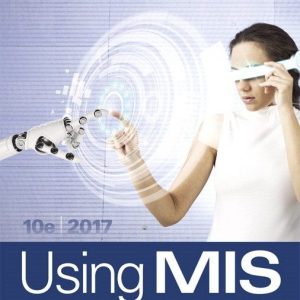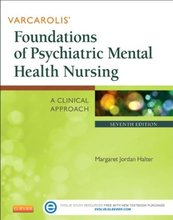This is completed downloadable of Auditing An International Approach 8th Edition Smieliauskas Test Bank

Product Details:
- ISBN-10 : 1259451275
- ISBN-13 : 978-1259451270
- Author: Wally J. Smieliauskas
Continuing its strong approach of providing in-depth coverage of fundamental auditing concepts and techniques, Smieliauskas, Auditing explores current developments affecting the audit profession and practice in Canada and internationally. These developments include the roll-out of the new audit report to go into effect December 15, 2018; new assurance standards and terminology; new code of professional conduct; an increased emphasis on ethical reporting; and a continuing emphasis on risk-based auditing, auditor independence, and the Canadian audit environment.
The eighth edition provides new, unique coverage of the auditing issues related to the new audit report, compliance versus fair presentation reporting, and audits of accounting estimates.
Table of Content:
- PART 1: Introduction to Auditing, Public Practice, and Professional Responsibilities
- CHAPTER 1: Introduction to Auditing
- Learning Objectives
- The Essentials of Auditing, Public Practice, and Professional Responsibilities
- Introduction: The Concept of Auditing
- User Demand for Reliable Information
- Definitions of Auditing
- International Auditing
- Application Case with Solution & Analysis: The AuditorÕs Most Important Quality
- Summary
- Key Terms
- Multiple-Choice Questions for Practice and Review
- Exercises and Problems
- Appendix 1A: How to Become a Professional Accountant in Canada
- Appendix 1B: Alternative Theories of the Role of Auditing in Society
- Appendix 1C: Describe the Different Kinds of Audits, Auditors, and Audit Firm Organizations
- CHAPTER 2: Auditors’ Professional Roles and Responsibilities
- Learning Objectives
- The Essentials of AuditorsÕ Professional Roles and Responsibilities
- The Current Environment of Auditing
- Regulation of Public Accounting
- Practice Standards
- GAAS
- Assurance Standards
- Quality Control Standards
- Application Case with Solution & Analysis: Which of the GAAS Is Most Important?
- Summary
- Key Terms
- Multiple-Choice Questions for Practice and Review
- Exercises and Problems
- Appendix 2A: GAAS of the United States
- Appendix 2B: Implementation of Quality Control Standards in Canada
- CHAPTER 3: Auditors’ Ethical and Legal Responsibilities
- Learning Objectives
- The Essentials of AuditorsÕ Ethical and Legal Responsibilities
- Introduction
- General Ethics
- Codes of Professional Ethics
- Independence and Objectivity
- The Legal Environment and Auditor Legal Responsibilities
- Liability under Common Law
- Statutory Law Liability
- Application Case with Solution & Analysis: Burden of Proof Concept in Law and Auditing
- Summary
- Key Terms
- Multiple-Choice Questions for Practice and Review
- Exercises and Problems
- Discussion Cases
- Appendix 3A: Framework for Critical Thinking
- CHAPTER 4: Reports on Audited Financial Statements
- Learning Objectives
- The Essentials of Reports on Audited Financial Statements
- The Association Framework
- AuditorÕs Reports and Variations
- Audit Report Reservations
- Application Case with Solution & Analysis: Meaning of the Words ÒPresent FairlyÓ in the AuditorÕs
- Summary
- Key Terms
- Multiple-Choice Questions for Practice and Review
- Exercises and Problems
- PART 2: Basic Auditing Concepts and Techniques
- CHAPTER 5: Preliminary Audit Planning: Understanding the AuditeeÕs Business
- Learning Objectives
- Preview of Parts 2 and 3 of the Text: Planning and Performing the Audit
- The Essentials of Preliminary Audit Planning and Understanding the AuditeeÕs Business
- The Independent Financial Statement Audit
- Independent Audit Engagement Characteristics
- Audit Engagement Acceptance Decision
- Understanding the AuditeeÕs Business, Environment, and Risks
- Preliminary Analytical Procedures for Audit Planning
- Materiality Levels for Audit Planning
- Documenting the Overall Audit Strategy and Audit Plan
- Application Case with Solution & Analysis: Audit Engagement Acceptance Decision
- Summary
- Key Terms
- Multiple-Choice Questions for Practice and Review
- Exercises and Problems
- Discussion Cases
- Appendix 5A: Example of an Audit Engagement Letter
- CHAPTER 6: Assessing Risks in an Audit Engagement
- Learning Objectives
- The Essentials of Assessing Risks in an Audit Engagement
- Business Risk and the Risk of Material Misstatement of the Financial Statements
- Financial Statement Assertions and Audit Objectives
- The Audit Risk Model and Its Components
- Working with the Audit Risk Model
- Accounting Processes and the Financial Statements
- Application Case with Solution & Analysis: Business Risk Analysis and Audit Implications
- Summary
- Key Terms
- Multiple-Choice Questions for Practice and Review
- Exercises and Problems
- Discussion Cases
- Appendix 6A: Business Risk Factors Used to Assess the Risk of Material Misstatement
- Appendix 6B: Corporate Governance
- CHAPTER 7: Internal Control over Financial Reporting
- Learning Objectives
- The Essentials of Internal Control over Financial Reporting
- Understanding Internal Control
- How Internal Control Relates to the Risk of Material Misstatement
- Fraud Risk Assessment
- AuditorsÕ Responsibilities for Detecting Frauds, Errors, and Illegal Acts
- Conditions That Make Fraud Possible, Even Easy
- Application Case with Solution & Analysis: Overstate the Inventory; Understate the Cost of Goods Sol
- Summary
- Key Terms
- Multiple-Choice Questions for Practice and Review
- Exercises and Problems
- Discussion Cases
- Appendix 7A: Risk and Internal Control Frameworks
- Appendix 7B: Procedures and Documents That Auditors Use for Fraud Detection
- CHAPTER 8: Audit Evidence and Assurance
- Learning Objectives
- The Essentials of Audit Evidence
- Evidence-Gathering Audit Procedures
- Business Information Sources and Methods
- Sufficient Appropriate Evidence in Auditing
- Audit Plan and Detailed Programs
- Audit Documentation
- Application Case with Solution & Analysis: Review of an Audit Plan
- Summary
- Key Terms
- Multiple-Choice Questions for Practice and Review
- Exercises and Problems
- Discussion Cases
- CHAPTER 9: Control Assessment and Testing
- Learning Objectives
- The Essentials of Control Assessment and Testing
- Internal Control Assessment for Planning the Audit
- Management versus Auditor Responsibility for Control
- Reasons for Control Evaluation
- Phase 1ÑUnderstanding Controls
- Phase 2ÑAssessing Control Risk
- Phase 3ÑControl Testing
- Auditor’s Responsibility to Report Internal Control Deficiencies and Fraud Risks
- Application Case with Solution & Analysis: Information Systems and Controls in a Small Business
- Summary
- Key Terms
- Multiple-Choice Questions for Practice and Review
- Exercises and Problems
- Discussion Cases
- Appendix 9A: Internal Control Assessment Aids for Audit Planning
- Appendix 9B: Understanding Information Systems and Technology for Riskand Control Assessment
- CHAPTER 10: Audit Sampling
- Learning Objectives
- The Essentials of Audit Sampling
- Introduction to Audit Sampling
- Test of Controls for Assessing Control Risk
- Sampling Steps for Tests of Control
- Substantive Procedures for Auditing Account Balances
- Sampling Steps for an Account Balance Audit
- Application Case with Solution & Analysis: Auditors Accused of Not Doing Sufficient Testing
- Summary
- Key Terms
- Multiple-Choice Questions for Practice and Review
- Exercises and Problems
- Discussion Cases
- Critical Thinking
- Appendix 10A: The Most Basic Statistical Sampling Tables
- Appendix 10B: Statistical Sampling Concepts for Tests of Controls and Tests of Balances
- Appendix 10C: R Value Table
- PART 3: Performing the Audit
- CHAPTER 11: The Revenues, Receivables, and Receipts Process and Cash Account Balance
- Learning Objectives
- Preview of Part 3: Linking Audit Planning to Performing an Independent Financial Statement Audit
- The Essentials of Auditing a BusinessÕs Revenues, Receivables, and Receipts Process and Cash Accoun
- Understanding the Revenues, Receivables, and Receipts Process
- Control Risk Assessment
- Example of Linking Risk Assessment to Substantive Audit Procedures for Audit of Cash Account Balance
- Substantive Audit Programs for the Revenues, Receivables, and Receipts Process
- Analysis of Financial Statement Relationships
- Misstatement Analysis
- Special Note: The Existence Assertion
- Special Note: Using Confirmations
- Special Note: Audit of Bank Reconciliations
- Application Case with Solution & Analysis: Detecting Misstatements in the Revenues, Receivables, and
- Summary
- Key Terms
- Multiple-Choice Questions for Practice and Review
- Exercises and Problems
- Discussion Cases
- Appendix 11: Internal Control Questionnaires for the Revenues, Receivables, and Receipts Process
- Appendix 11: System Documentation Examples for the Revenues, Receivables, and Receipts Process
- CHAPTER 12: The Purchases, Payables, and Payments Process
- Learning Objectives
- The Essentials of Auditing a BusinessÕs Purchases, Payables, and Payments Process
- Understanding the Purchases, Payables, and Payments Process
- Control Risk Assessment
- Substantive Audit Programs for the Purchases, Payables, and Payments Process
- Special Note: Physical Inventory Observation and Audit of Inventory and Cost of Sales
- Special Note: Audit of PPE and Intangible Assets
- Special Note: The Completeness Assertion for Liabilities
- Application Case with Solution & Analysis: Detecting Misstatements in the Purchases, Payables, and P
- Summary
- Key Terms
- Multiple-Choice Questions for Practice and Review
- Exercises and Problems
- Discussion Cases
- Appendix 12: Internal Control Questionnaires for the Purchases, Payables, and Payments Process
- CHAPTER 13: Payroll and Production Processes
- Learning Objectives
- The Essentials of Auditing the Payroll Process and the Production Costing Process
- Risk Assessment for the Payroll and Production Processes
- Part I: Understanding the Payroll Process
- Control Risk Assessment
- Substantive Audit Program for Payroll
- Part II: Understanding the Production Process
- Control Risk Assessment
- Substantive Audit Program for the Production Process
- Application Case with Solution & Analysis: Detecting Misstatements in the Payroll and Production Pro
- Summary
- Key Terms
- Multiple-Choice Questions for Practice and Review
- Exercises and Problems
- Discussion Cases
- Appendix 13: Internal Control Questionnaires for the Payroll and Production Processes
- CHAPTER 14: The Finance and Investment Process
- Learning Objectives
- The Essentials of Auditing the Finance and Investment Process
- Understanding the Finance and Investment Process
- Control Risk Assessment
- Substantive Audit Programs for the Finance and Investment Process
- Application Case with Solution & Analysis: Detecting Misstatements in the Finance and Investment Pro
- Other Aspects of Clever Accounting and Fraud
- Summary
- Key Terms
- Multiple-Choice Questions for Practice and Review
- Exercises and Problems
- Discussion Cases
- Appendix 14A: Derivative Securities—An Example of Risks That Management and Auditors Face
- Appendix 14B: GAAP for Private Enterprises
- CHAPTER 15: Completing the Audit Work
- Learning Objectives
- The Essentials of Completing the Audit Work
- The Completion Stage of the Audit
- Completing the Audit of Revenues and Expenses
- Overall Analytical Procedures
- Procedures to Detect Contingencies and Claims
- Events Subsequent to the Balance Sheet Date
- Written Management Representations
- Audit Documentation Working Paper Review
- Application Case with Solution & Analysis: When in Doubt, Defer!
- Summary
- Key Terms
- Multiple-Choice Questions for Practice and Review
- Exercises and Problems
- Discussion Cases
- CHAPTER 16: Applying Professional Judgment to Form the Audit Opinion and Issue the Audit Report
- Learning Objectives
- The Essentials of Applying Professional Judgment to Form the Audit Opinion and Issue the Audit Repor
- Applying Professional Judgment to Form the Audit Opinion
- Overall Evaluation of Audit Evidence and Misstatements
- Writing an Audit Opinion on the Financial Statements
- Significant Matter Paragraphs: Additional Information in the Audit Report
- Auditor Communications
- Application Case with Solution & Analysis: Final Overall Analysis Uncovers Unusual Related-Party Tra
- Summary
- Key Terms
- Multiple-Choice Questions for Practice and Review
- Exercises and Problems
- Discussion Cases
- Appendix 16A: Audit Completion Checklist
- Appendix 16B: The Impact of Subsequent Events on Audit Reports
- PART 4: Other Topics in Professional Public Accounting Practice
- CHAPTER 17: Other Public Accounting Services and ReportsÑReviews and Compilations
- Learning Objectives
- The Essentials of Other Engagements Involving Financial Statements
- Unaudited Financial Statements
- Other Review and Compilation Topics
- Interim Financial Information
- Public and Restricted Reports on Internal Control
- Audit Reports on Internal Control
- Summary
- Key Terms
- Multiple-Choice Questions for Practice and Review
- Exercises and Problems
- Discussion Cases
- CHAPTER 18: Professional Rules of Conduct Details and Auditor Responsibilities
- Learning Objectives
- The Essentials of Some Detailed Rules of Professional Conduct
- Why There Are Detailed Rules of Professional Conduct
- Codes of Professional Ethics
- Regulation and Quality Control
- Consequences of Unethical/Illegal Acts
- Summary
- Key Terms
- Multiple-Choice Questions for Practice and Review
- Exercises and Problems
- Discussion Cases
- CHAPTER 19: PART I: The Audit of Accounting Estimates: Basic Material Relating to Accounting Estimat
- Learning Objectives
- The Essentials of Judgments for Accounting Estimates
- Introduction
- Going-Concern Assumption
- Review of CAS 540
- Discussion of CAS 540
- CICA Audit Guideline 41
- Principles-Based Reasoning with Accounting Estimates Using Risk-Based Reasoning
- Application Case with Solution & Analysis: Illustration of Audit Risk and Accounting Risk Using Poin
- Summary of Part I
- Key Terms
- Multiple-Choice Questions for Practice and Review
- Exercises and Problems
- CHAPTER 19: PART II: The Audit of Accounting Estimates: Advanced Issues in the Audit of Accounting E
- Learning Objectives
- A Quantitative Model for Information Risk
- Modelling Accounting Risk with Reasonable Ranges
- The Risk-Based Reasoning Matrix
- Importance of Benchmarks (ÒRisk AdjustedÓÑReasonable Ranges) and Key Formulas in Their Derivation
- Summary Comments on the Risk-Based Reasoning Principle for Accounting Estimates
- Getting Your Ranges Calibrated
- Application Case with Solution & Analysis: Data Analytics Case Study: Barrick Gold Corp. 2013
- Summary of Part II
- Multiple-Choice Questions for Practice and Review
- Exercises and Problems
- Answers to Calibration Exercises
- Appendix 19A: Detecting Fraudulent Reporting in Accounting Estimates Using the Quantitative Model fo
- CHAPTER 20: Legal Liability Cases (online)
- Learning Objectives
- The Essentials of More-Advanced Issues in Legal Liability
- Liability under Common Law Cases
- AuditorÕs Liability under Statutory Law
- Liability under SEC (Statutory) Law
- Summary
- Key Term
- Multiple-Choice Questions for Practice and Review
- Exercises and Problems
- CHAPTER 21: Other Professional Accounting Services and Reports, Including Fraud Auditing (online)
- Learning Objectives
- The Essentials of Other Professional Accounting Services and Reports, Including Fraud Auditing
- Part I: Assurance Engagements
- Special Reports and Compliance Reporting
- Forecasts and Projections
- Financial Statements for Use in Other Countries
- The Assurance Framework
- Audits of Public Sector and Not-for-Profit Financial Statements
- Economy, Efficiency, and Effectiveness Audits
- Environmental Audits: Another Potential Type of Assurance Engagement
- Application Case with Solution & Analysis: Suitable Criteria, GAAP, and Critical Thinking
- Part II: Fraud Awareness Auditing: More on Auditor Fraud Responsibilities and How to Detect Fraud Co
- Discussion of the Consequences and Significance of the Madoff Event
- AuditorsÕ and InvestigatorsÕ Responsibilities
- Fraud Prevention
- Application Case with Solution & Analysis
- Documents, Sources, and Extended Procedures
- After Discovering a Fraud
- Fraud Audits as Assurance Engagements: A Critical-Thinking Issue
- Bribery and Corruption: A Global Social Concern
- Summary
- Key Terms
- Multiple-Choice Questions for Practice and Review
- Exercises and Problems
- Discussion Cases
- Appendix 21: Other Advanced Assurance Topics
- Accounting Handbook Lists
- Glossary
- Index





